Content |
|---|
History
The Castro Laboreiro Dog (Cão de Castro Laboreiro) It is a breed of Portuguese dog of large size. Originating in the parish of Castro Laboreiro, Melgaço, is a dog type Lupoid amastinado is lighter than other breeds of cattle dogs.
The Castro Laboreiro Dog it has its origin in the region that gave it its name, the people of Castro Laboreiro, in the municipality of Melgaço. It is a rugged mountainous region that stretches from the Miño river to the Peneda and Soajo mountains between the Trancoso rivers, Laboreiro and moro, until around 1400 m above sea level.
Like the dog, Castro Laboreiro is one of the oldest regions of the land of Portugal. The prehistoric remains such as dolmens and rock paintings, They demonstrate the presence of man in the region for thousands of years. The strengths are evidence of the strong presence of Celtic culture in the region. Also the Celts and the Romans came here, the roman roads and the construction of bridges with their landmarks. The castrejas communities have always lived of hunting, fishing, grazing and agriculture.
The search for good pastures for cattle carried out a kind of short-distance transhumance, which has become a seasonal migration that still occurs in some sectors of the population characterized by a curious adaptation to mountainous terrain and climate.
The dogs that accompanied (and accompany) These movements of transhumant cattle that, being a short distance, unlike what happened in the rest of the Iberian Peninsula (including the transhumance of herds of sheep in the Serra da Estrela, whose movement reached several hundred miles), an animal so powerful is not necessary.
The number of sheep and goats, has been declining in recent years and is progressively replaced by cattle. The Castro Laboreiro Dog has been adapting to social changes, It is still as effective in protecting the sheep, goats and cows as yesteryear, but it has also acquired new features. Due to the emigration of men over the years 40, mainly to France, leaving women alone to care for the Earth and the animals, dogs have developed a very important role in the custody of property and of the members of the families, In addition to the protection of livestock that was his main work.
This special character, carved by the hardness of the mountains and the pace of life of the inhabitants of Castro Laboreiro, It was also the result of the isolation of that region that was difficult to access -until very recently – the first dirt road was completed in 1948.
Scientific advances have allowed geneticists to confirm certain tests (for example, Archaeological, morphological and behavioral) who claim that the wolf is the ancestor of the Castro Laboreiro Dog. According to the fossil records, the domestication of the Wolf has been hace aproximadamente 14.000 years in the region of the fertile Crescent, dogs have spread rapidly throughout Europe, Asia and North America. Genetic studies also indicate that domestication must have happened only once.
Despite the presence of dogs in the Portuguese territory since the Mesolithic, the first traces appear in depictions of scenes of hunting in Roman mosaics. The earliest references to the national races in the century. 16TH, He suggests that they may be at least 300 to 600 years.
Cattle dogs have always been an important element in the agropastorales communities. Regarding the Castro Laboreiro Dog, their quality and their importance are highlighted by various authors. Leal Augusto (1874), describing the region, makes mention of the existing dogs, also the ethnographer José Leite de Vasconcelos (1933) refers to the Castro Laboreiro as. There are also references to race in literature, like the novel of Camilo Castelo Branco, Prazins Brazil (1879).
The national pride generated by Castro Laboreiro Dog shines all year in the Castro Laboreiro Dogs competitions, the oldest existing in Portugal canine competition. Developed by Father Aníbal Rodríguez, Castro Laboreiro priest from 1945 (died in 2003), This competition is traditionally held every year since the middle of the 50, was held for the first time in October and in recent decades 15 of August. The competition has been very important in spreading and maintaining the characteristics of the breed.
In fact, mixing with other races was a serious problem until very recently. The introduction of other races, facilitated by greater openness to the outside of the region, produced crossing, not controlled, with the native dogs, which led to the appearance of specimens with less common characteristics that alerted many judges in the contests and those interested in the breed through various media.
This problem is greatly exceeded by responsible breeders through greater control of mating. They were interested in learning everything about the characteristics of the breed, winning a lugarcito in the Portuguese Kennel Club (CPC), Noting the parents of the litter and placing copies in the genealogical book of the race.
Despite the recognition of its antiquity, only in the second quarter of the 20th century relevant studies were initiated to achieve a definition of the standard of the breed. What was published in 1935 by Professor Manuel Fernández Marques. This was an important milestone for the conservation of the breed, being a guarantor of the preservation of its original characteristics. In effect, the standard represents the ideal type of race, the description of the characteristics that are defined, they form the basis of reference to follow in selecting. Despite the fact that the standard was published in 1935, the earliest records in the genealogical book of the race were provisionally in 1932. In 1993 adopted an amendment to the height at the cross, was increased in 4,3 cm., which reflects the trend observed in the breed in recent years.
Despite their smaller body size, Agility is also an advantage in the fight with the Wolf, easy to escape the attack of these. There are many stories of dogs who helped pastoralists to capture wolves when they were attacking livestock, Yet there are few reports of dogs fatally attacked by wolves.
The specific characteristics of the environment of the region and the grazing system, along with geographical isolation, have given rise to a unique cattle dog. Despite the probable common origin for more than 50 cattle dog breeds recognised in Asia and throughout the Mediterranean region, It is distinguished by being a smaller dog. In fact, It is a breed of dog of mountain, of medium to large rather than amastinada Lupoid – with a lighter head, but powerful, and with a height to the cross which can vary between 55 and 64 cm. (more than 2 cm tolerance) and a weight of between 25 and 40 kg. These characteristics allow you to be more active and therefore restless, always alert, easily to be quickly has the presence of predators, When caring for cattle is about.
Physical characteristics
The eyes of the Castro Laboreiro Dog they are sloped almond-shaped and medium in size. Its coat consists of a layer of light brown pelage tends to dark brown. The ears are triangular, rounded at the tip and pendants. When is the dog attentive, the ears become forward. The tail is broad and thick, up the legs when the dog is calm and movement takes the form of Saber, beyond the bottom line. The hair is short (5 cm.) thick and resistant, hard to the touch, soft and abundant throughout the body. Usually, the hair is soft in some areas, as the head and ears. Coat color consists of a dominant solid color coat often streaked.
Because of their proven effectiveness in the protection of herds against wolves and other predators such as foxes or feral dogs attacks increasingly are used to protect the flocks of goats and sheep or herds of cows, from the plateau of Castro Laboreiro mountains to Alvão. In this region there is a growing core of dogs of the breed made up of the Wolf Group – Association for the conservation of wolves and its ecosystem. The Wolf group has developed an innovative project of great interest, whose objective is to promote the use of dogs Castro Laboreiro in the protection of livestock, in order to reduce the losses caused by wolves, and thus reduce the conflicts that rural communities have with this predator.
The Iberian wolf, the last of our fauna of large carnivores, It is in danger of extinction and are fully protected by law from 1988. So we come to a situation where the wolf recovery conservancy is affiliated with a national breed of dog, the Castro Laboreiro Dog, is also at risk of extinction. The genetic heritage of animals is part of the national biodiversity we have responsibility for the preservation, since its loss would be irreversible.
During the first months of life, especially of 2 to 6 months of age, progressive contact with a variety of environments and situations should be given to the dog (for example, walking in the street or traveling by car, get in touch with strange people and children and other dogs). An adequate education, with positive stimuli and without the use of force, It is the basis for the development of a balanced and healthy pet.
The dogs may have two litters a year, the first - in general- after 6 months of age. The litters tend to have, on average, seven dogs, can, However, achieve the 14 dogs.
When the puppies are born they have a darker coat that tends to gradually lighten as they grow older and acquire the typical striping.. Also the texture and hardness of hair change accompanied with growth.
With respect to the height of the samples was proposed in the meeting General annual of the Club of Castro Laboreiro dog (10 in July of 1993) the change in height for males 58 to 64 cm. (with a tolerance of + 2 cm.) and females in 55 to 61 cm. (with a tolerance of + 2 cm.). The proposed modification of the standard was adopted by unanimity and, later, subject to approval by the Portuguese Kennel Club, where be later reviewed by the Technical Committee, It was adopted by the General extraordinary Board of the canine Portuguese Club the 24 in August of 1993.
Character and skills
Despite her natural aptitude for the protection of animals is a very versatile breed, he excelled in different roles. It was used as a dog by the military police and in the Marine Corps in Portugal to maintain order.. Some are also used in packs for hunting.
It is also an excellent guard dog and companion, by his innate to protect ability and complete dedication to its owner, will be of great delicacy, especially with the children.
It is an intelligent dog, easy to train, but with a somewhat independent temperament, It is derived from its task of protecting the herd, in which he acts independently of the pastor.
Establish a strong bond with your family (human or not) It protects instinctively from all danger. It has a great capacity for the protection, always vigilant, attentive to any thief or dangers that come, looking for possible threats… Males tend to be more dominant and aggressive in the presence of other males, but, used from small, You can easily live with other males of owls size.
Observations
Its bark is very characteristic and very loud: begins with varying tones, serious only, and it ends with a howl-like extended treble.
Images “Castro Laboreiro Dog”
Videos “Castro Laboreiro Dog”
Type and recognitions:
- FCI CLASSIFICATION: 170
- Group 2: Pinscher and Schnauzer - Molossoid and Swiss Mountain and Cattledogs
- Section 2: Molossoid - 2.2 Molossoid, mountain type. Without working trial..
Federations:
FCI ⓘ, UKC ⓘ
FCI breed standard "Castro Laboreiro Dog"
Alternative names:
1. Portuguese cattle dog, Portuguese watchdog (English).
2. Cão de Castro Laboreiro (French).
3. CCL, CASTRO-LABOREIRO-HUND (German).
4. Cão de Castro Laboreiro (Portuguese).
5. Perro de Castro Laboreiro (español).
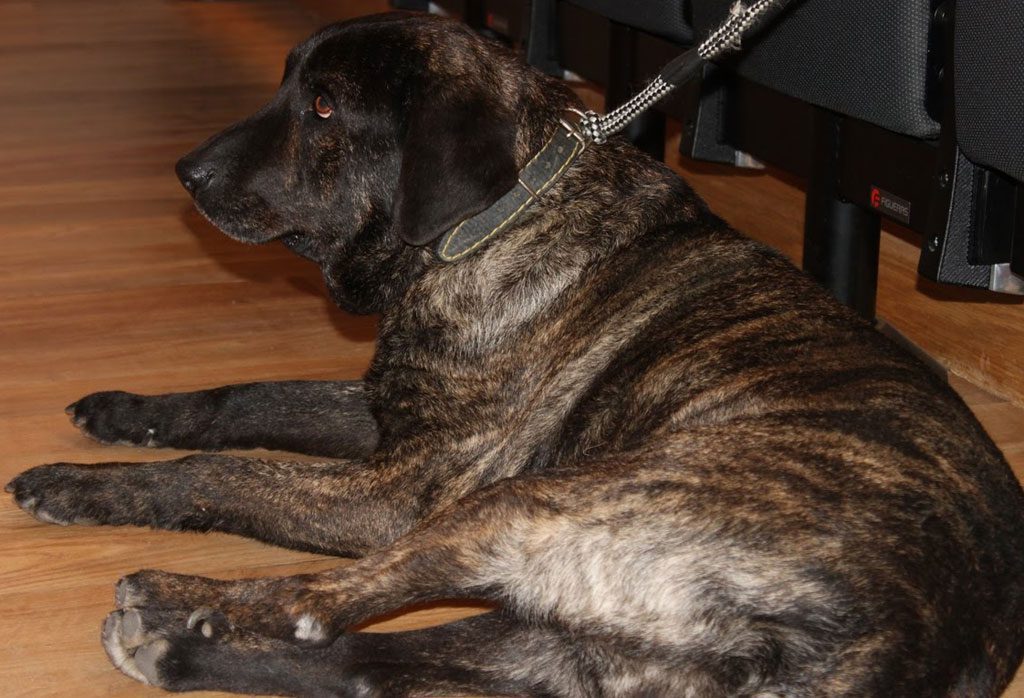
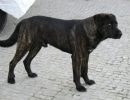
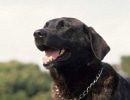
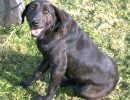
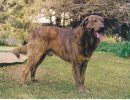
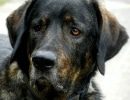
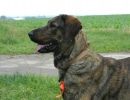
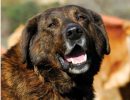
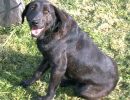
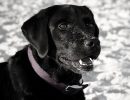
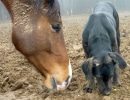
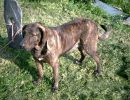
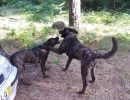
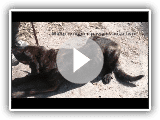 Castro Laboreiro Young Dog Chaos 1st_5th day.mp4
Castro Laboreiro Young Dog Chaos 1st_5th day.mp4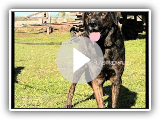 DOG – CASTRO LABOREIRO
DOG – CASTRO LABOREIRO The Cao de Castro Laboreiro Keisha (Portuguese Cattle Dog)
The Cao de Castro Laboreiro Keisha (Portuguese Cattle Dog)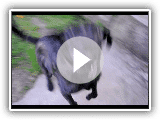 “laborer Castro dog” – Castro Laboreiro Dog
“laborer Castro dog” – Castro Laboreiro Dog
The third Keysha video, not a Castro Laboreiro Dog.
I have a dog there is 12 years of the Castro Laboreiro breed, to get me to the guard of my yard, in Castle Street, N 10, San Antonio-Serpa, behaves as if the House was really her, sweet and always attentive to what is going on around her. Initially I had some bad habits because when I came to Lisbon to this my land, I found it abandoned on the street, where parmanecia was more or less six months, without any support or company but hunger and thirst.
I hope it will continue its life for a few more years where it has always provided good service and excellent company..
It is a pity that our politicians have only now remembered the mistreatment of animals, After forty years of democracy, in which are only represent themselves and individually on behalf of political parties.